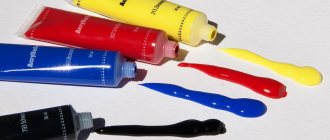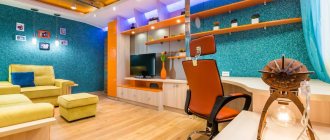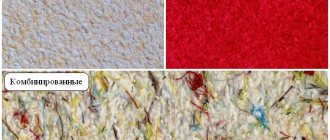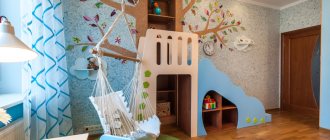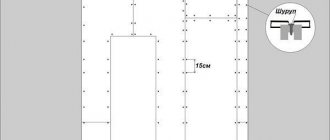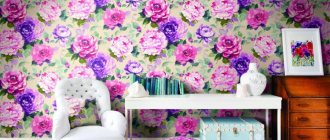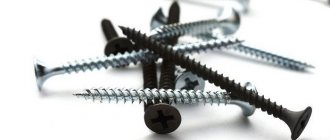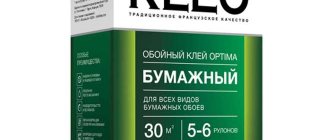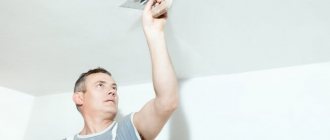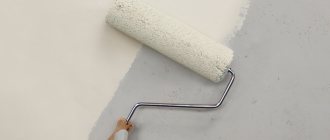Before finishing work, prudent owners calculate in advance the consumption of liquid wallpaper so that there is enough mixture not only for all surfaces to be covered, but also to have something left in reserve - raw materials for restoration. Based on the calculated finishing area, it is easy to calculate the required number of kilogram packages. It is enough to divide the area by the number of squares specified by the manufacturer. What about in practice?
Liquid wallpaper consumption per 1 sq. m
A notable feature of liquid wallpaper is the ability of the material to be used repeatedly. Dried glue readily absorbs water and gets wet, after which the mass can be used as new. This property is used to take care of raw materials in advance for local restoration of the coating in case of damage. Thanks to this, the excess remaining from the finishing mass will not be superfluous. However, a mixture of liquid wallpaper is an expensive material, so making large reserves is irrational.
But the lack of a mixture prepared for work can have a detrimental effect on the quality of the finish, for example, by the appearance of a visible difference in shades where the color should be the same.
This is possible for two reasons:
- if dough of two different batches is applied to one wall;
- if there is a break during work.
To avoid both options, you need to take care of preparing the required amount of dough from one batch of the selected color, sufficient to decorate one room.
It is possible to correctly calculate the volume of required material only taking into account the consumption of liquid wallpaper per 1 square meter.
First, we focus on the average figure - 300 g of dry composition is required per 1 m2. Considering only this figure, we get a rough approximation to the real consumption for a layer thickness of 2-3 mm.
In the future, using this indicator, we make adjustments that take our conditions into account as much as possible. This indicator, without any special changes, can be useful if we need to cover only small areas with liquid wallpaper, for example, to make a background for a decorative panel.
How to properly dilute the dry mixture
Before finishing finishing work, it is necessary to dilute liquid wallpaper.
Initially, the store sells dry powder, from which a solution can be prepared at home for application to walls.
It is quite easy to prepare a solution of a suitable consistency; there are special instructions for this, which consists of several simple steps.
Instructions and proportions
Liquid wallpaper should be soaked in a proportion of approximately 5-6 liters of water for each kilogram of powder. For accurate information, please read the instructions on the package. When preparing the solution, you must carefully pour the powder into a container of water.
The solution must be mixed by hand, breaking up large lumps to obtain a homogeneous mass.
Liquid wallpaper is mixed in warm water
What to do with decorative additives
The right choice of decorative coating can turn wallpapering into an exciting experience. When using decorative additives, powder, mineral chips or glitter, the algorithm of actions is as follows:
- It is necessary to add glitter and other decorative elements to the water and mix them thoroughly.
- After this, you can add liquid wallpaper powder to the water.
- The resulting mass must be kneaded and mixed with your hands.
Which tool to use
You can knead the solution without using various tools. It is enough to dilute the composition with water, distributing the bulk mixture evenly throughout the entire volume of the container.
Using a mixer or other rough tools may disrupt the structure of the powder, which will lead to poor coating performance.
Consumption per package
Silk plaster can be purchased ready-made (packaged in buckets) or in the form of a dry powder mixture. In the case of using a specific type of liquid wallpaper, the consumption of one package recommended by the manufacturers is also taken as the base. If necessary, we will make adjustments.
where the consumption of liquid wallpaper is indicated on the packaging
The packaging shows two numbers - the minimum and maximum area that the dough covers. It is prepared from 1 kg of mixture and applied using a spatula with a thickness of 2-3 mm (Silk plaster recommends a layer thickness of 1.5-2 mm). The footage was calculated for finishing by craftsmen. This value is different for different compositions. So a kilogram of some compositions is enough for 4 m2, others – for 5-6 m2.
The weight of the packages may vary, for example, there are one- and two-kilogram packages. Consequently, the coverage areas are different.
Liquid wallpaper: how long does a package last?
The cost of wallpaper packaging depends entirely on professionalism and awareness of the correct application of the material. Material costs are also affected by a properly prepared surface.
If calculated correctly, the use of liquid wallpaper will be quite economical. One package of wallpaper is enough for approximately 4 square meters. m., applied by hand.
It should be remembered that manufacturers of liquid wallpaper recommend mixing the mixture thoroughly and well, this way you can greatly increase the coverage area
When using a spray gun, the cost is reduced to using one package per 6 square meters.
Liquid wallpaper calculator
If you have a question about how to calculate the amount of liquid wallpaper for 1 room, you can use our calculator program for an approximate calculation.
The calculator contains the average parameters for the consumption of liquid wallpaper 1 kg of mixture per 4 m2.
To calculate, simply enter the dimensions of the room being repaired and the consumption data indicated on the packaging (or use the default consumption data included in the calculator).
ATTENTION!!! If the calculator is not visible on your device, check whether JavaScript is enabled in your browser. Or whether other programs blocking the loading of the calculator are enabled, and reload the page by clearing the browser cache.
Calculation of liquid wallpaper consumption
Attention! The calculator already includes a 20% overrun compared to the data indicated by the manufacturer.
Popular manufacturers
In this area, the French - the inventors of this coating - are still leaders. The French brand Senideco is very popular in the world. Manufacturers call this material decorative cladding. The product is of high quality, comes in a variety of colors and textures.
They contain mica, cellulose, dyes, and glue. In terms of quality and decorativeness, the products of this company occupy the first line of the rating. They have a high price, but the quality justifies it. If you know how to calculate the amount of liquid wallpaper, you won’t have to overpay.
Decorative coating Cotex. It is based on cotton fiber, also produced in France. Any surface is suitable for their application, but they will first need to be well treated with an oil primer. This will prevent absorption. Wallpaper can be cleaned using stain removers for cotton fabrics. The quality is high, and so is the price.
Silk coat. Product of a Turkish company. This is an environmentally friendly material, of good quality, does not fade in the sun, and is available in many different shades and textures. Acrylic primers are pre-applied; water-dispersion compositions can be used.
To make the coating moisture resistant, a fixative varnish is needed. The possibilities for using this wallpaper are more modest, but the price is also lower. Before purchasing, you should calculate the amount of liquid wallpaper for the required area.
Among the Russian manufacturers, the Silk Plaster brand has been quite widely known in the building finishing materials market for 15 years. The products are made on the basis of silk fibers. It is resistant to light and is not afraid of moisture. Characterized by a wide variety of colors. Designer types are available that are more expensive than the main line. Overall, it's good quality at a low price.
Calculation of the area of the processed surface
To calculate the number of packages, take more accurate measurements and calculate the actual finishing area.
room dimensions are shown by arrows
You will need to measure:
- width, height of walls;
- the size of the window openings (which will need to be subtracted from the wall area);
- dimensions of the door opening (also for subtraction);
- measure the slopes of windows and doors (we neglect these data in the calculator);
- if there are partitions, columns, arches, niches, measure their areas separately.
The area of each element is calculated based on measurements separately. From the total area of the wall (partition), obtained by multiplying the width by the height, subtract the total area of the window and door openings and add the sum of the slope areas. They also subtract the area of areas that are planned to be finished with other materials (tiles, stone, etc.).
If finishing is planned with masses of different colors, the area allocated for each color is determined in order to tint a sufficient amount of the base dough. This is only necessary for large areas of each color.
The area value determined in this way can be used not only for an online calculator. Let’s say that if experience has shown that we apply a layer with a thickness of not 1.5-2 mm (as manufacturers calculate), but 3-4 mm, then the resulting square footage of the room needs to be multiplied by 2. Or for liquid wallpaper, the consumption per 1 sq. m is equal to 300 g, double it.
Theoretical knowledge
Be patient and do some calculations. Each package contains approximately 1 kg of material, which is enough for an area of 3 - 4 square meters. The calculation of consumption depends on the following factors:
- Determine the application method (hand spatula or spray)
- Application thickness
- The presence of columns and all kinds of corners and transitions
- Wall surface
- How many colors will be needed when applying appliqués or designs?
Using a sprayer, you can reduce consumption and cover a larger area of the wall due to the fact that the layer is applied evenly and quite thin. If you use a spatula, it is recommended not to level the walls to an ideal smooth surface; it is better to leave small cracks and irregularities, then the coating will adhere better to the wall.
It is better to make the coating thickness approximately 1.3 - 2.5 mm. However, you need to remember that liquid wallpaper is an excellent additional sound, noise and thermal insulation, and if you need to increase it, make the wallpaper layer thicker and use this data in your calculations.
If you do not have a standard square room box, but have columns, an arch, stepped transitions to the ceiling, then the consumption will increase, the calculations will be more difficult, but it is quite possible to understand how much material will be needed.
What affects material consumption
In reality, a square may require a different amount of dry mixture, because the:
- compositions of mixtures (type of glue, fillers);
- conditions for mixing them with water (temperature, amount of liquid);
- surface quality of bases;
- layer thickness (in addition to experience and the method of application, the thickness may be affected by the presence of clots in a solution prepared in violation of the technology);
- application methods;
- the shape of the surface to be finished (areas with complex shapes and reliefs will require more material than a flat wall), the presence of doors and window openings in the walls;
- type of pattern and technique of its creation;
- finishing skills.
So, if a package of 1 kg of liquid wallpaper “Fort”, “Art Design”, “Air Line”, “Premium” and some other brands, according to manufacturers’ calculations, should be enough to cover 3 m2, then a package of “Provence” will be enough for 3.5 squares, “ Standard" - by 4 squares, and "Optima" - by 4.5. When purchasing, you should take into account the consumption data from the manufacturer.
If the walls are too smooth or, conversely, not too smooth, the volume of the required number of packages should be increased by 10-15%. An increase in the layer may be due to improper mixing, and the consumption of the dry mixture may be due to less water used to dilute the dough.
If you know how to work with liquid wallpaper, less consumption occurs in the case of mechanized application of silk mass. The larger one is for hand sculpting.
Up to 20% of the reserve is provided in case of lack of skill in working with liquid wallpaper. Beginners still have to learn how to stick the mass fairly evenly. Even when applying a two to three millimeter layer, they can make the coating thicker in places.
A reserve of ~20% will be required for finishing walls where there are many hard-to-reach places and areas with difficult terrain. It takes more to smooth out differences and process the corners of the material. The same applies to the various columns and niches. It will not be possible to maintain the same distance between the wall and the trowel everywhere.
In the case of making complex patterns, for example, two-color ones using a stencil or modeling, material consumption may increase by 20%.
complex pattern with liquid wallpaper
Even the addition of decorative components can affect the consumption of materials. For example, adding quartz grains of a fraction of 2-3 mm will make it impossible to apply a layer thinner than this value.
The combination of factors that increase the consumption of raw materials may be different. If factors are combined, a margin of up to 60% may be required. In order to more realistically imagine what size it is better to take the reserve, the consumption is determined empirically (experimentally).
How to calculate 1 kg of liquid wallpaper: how many squares is enough?
If you need to calculate each wall in meters, you can turn to the formula for help: length multiplied by width. This calculation is made to clarify the dimensions of doorways and windows. The total area is calculated, and the parameters of windows and doors are subtracted from the data obtained.
Correct measurement is carried out as follows:
- The height and width of the walls are measured;
- The height and width of the windows are measured;
- Measure the width and height of doorways.
When making calculations, it is very important to take into account not only the entire area, but also those factors that may affect your repair. This could be due to the poor condition of the repair surface or the wrong tool for the job. Non-professional workers often spend more on materials.
Basically, on each wallpaper package, the manufacturer provides a material consumption table. If there is none, then special sites can help with their calculation calculators. In order to use them, you only need data on your area.
Control batch
To determine how much liquid wallpaper per square meter will be used based on our skill, the condition of the walls, or for a specific pattern, we can perform test mixing and application. Let's say, when packaging liquid wallpaper in 1 kg packs, we determine how many squares one package is enough for. For kneading we use the entire contents of one package. We proceed according to the instructions when preparing the dough. Weigh the resulting dough (the mass will be more than 1 kg).
trial application of liquid wallpaper
We choose a place in the room where, after arranging the furniture, the experimental area will not be visible. We outline a square meter area with a pencil. We glue a lot of silk plaster, following the application technology. After this, we weigh the rest of the dough and use the proportions to calculate how many full squares one package is enough for. The rest is not difficult to calculate.
Calculation of the amount of material per room
How to calculate the weight of liquid wallpaper for the entire room? To calculate consumption, you need to do the following:
- Measure the length of adjacent walls.
- Multiply numbers and multiply the result by two.
- Multiply the resulting number by the maximum height of the walls. As a result, the area to be treated will become known.
- Calculate the area of door and window openings and subtract it from the total area.
- If you plan to process the ceiling, add its area.
- The total number of square meters must be multiplied by the above or by the manufacturer's recommended consumption.
Table of wall area excluding window and door openings
How to use leftover material
As already noted, liquid wallpaper is a reusable material. Even if there is a lot of leftovers, they can be used later. To do this, “crackers” are prepared from them: they spread a film on which the dough is laid out in a thin layer. The “canned food” is dried for two to three days. The dried plates are broken into pieces that will be easier to put into a bag, and then the bags are placed in the pantry or garage. Dried dough is not afraid of frost. It is advisable to protect such workpieces from exposure to sunlight.
The dried mass from different batches is stored separately. It is advisable to include paper in the bag indicating the room for which the dough was used. This will help you find the right supply if the colors of the “crackers” differ little from each other.
In addition to local restoration of damaged or stained surfaces, “crackers” can be used to change the design. For example, adding new colored elements to the pattern on the wall. After soaking with water, knead the lumps with your fingers, then leave to “ripen” in the same way as a fresh composition. Stir again before use.
The reconstituted dough can be tinted. It is also possible to additionally add glitter, quartz grains and other decorative inclusions.
How to store diluted liquid wallpaper?
If you prepare too much wallpaper, you should set aside the material for later use:
- To this end, dry all remaining material by placing it on a plastic bag. It is recommended to dry different wallpaper formats in different containers.
- Once the mixture is dry, place it in a bag or large airtight bag, after removing the air from it.
- When reusing, you only need to add water to the composition.
Tyutyunnikov Dmitry
Article verified by a decorative finishing specialist
How long does liquid wallpaper take to dry after application?
The drying time of liquid wallpaper greatly depends on environmental factors. These include humidity, temperature and ventilation. The layer of applied material is also important. If the room is ventilated, the temperature is high and the humidity is low, then the coating applied in a thin layer will dry within a day. If the coating is applied in a thick layer, there is no ventilation, and the room is cool and dry, then drying can last 3 days.
Touch the coating of liquid wallpaper with your hand. If it feels damp and cold, the material is not yet dry.
It is generally accepted that liquid wallpaper takes 48 hours to dry. However, this time can always be reduced. Install a fan or use a hairdryer. In both cases, although for different reasons, the coating will dry faster than the standard time.
If water drips from it when applying liquid wallpaper, it will take longer to dry than usual.
What are the pros and cons?
Any finishing material has positive and negative sides. Liquid wallpaper also has pros and cons. Let's start with the positive aspects:
- Environmental friendliness and hypoallergenicity are the advantages of liquid wallpaper, which allows them to be used in a children's room without fear.
- No seams remain. It is the seams that are a big problem when working with finishing materials, but not in the case of liquid wallpaper.
- Easily repaired. What other material, a couple of years after application, can be soaked, carefully removed at the site of damage, kneaded and stuck back. There are no chips, scuffs or dents to worry about.
- Minimum pollution. There is no need to wash the floor after wallpaper paste, lay down cellophane for paint, or scrape off pieces of plaster that have fallen from a spatula. Liquid wallpaper is mixed in a basin or bucket by hand, which means there is no splashing from the mixer. During the application process, pieces of the finished mixture do not fall off or fall under your feet.
- The finished surface “breathes”, which means that fungus and mold will not appear.
- Using this material, you can create various decorative patterns and paintings that will delight the eye for many years.
- Easily dismantled. Just moisten it and just peel it off with a spatula.
- The finished coating is pleasant and warm to the touch.
- The relative ease of application allows even beginners in the field of renovation to work with liquid wallpaper.
- Immediately after application, you can open the windows for ventilation. The coating will not peel off the wall.
You can create a wide variety of pictures with liquid wallpaper.
Liquid wallpaper has its pros and cons, so stop praising it, it’s time to talk about the negative. What's wrong with this material?
- Price is the factor that discourages you from buying liquid wallpaper. Their high cost hints to us that this is not just a finishing material, but a method of decorative finishing in the interior.
- A very long application process if you work manually.
- You can end up with low-quality products. In pursuit of a low price, many choose unknown manufacturers, thinking that their liquid wallpaper will be as perfect as that of the top players on the market. As a result, you can end up with a material that clumps up when applied, does not stick well to the wall due to the small amount of glue in its composition, or turns into an unattractive rag after a couple of years.
- The finished coating is afraid of water, which can damage it with prolonged exposure.
Many people are interested in whether liquid wallpaper burns. We can find out the answer to this question from the video.
